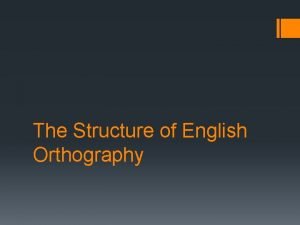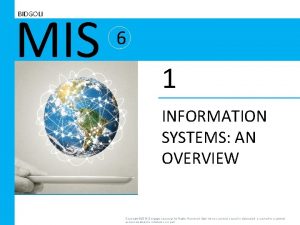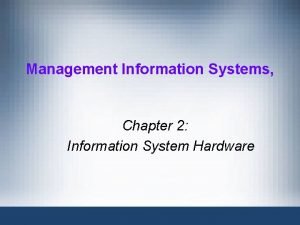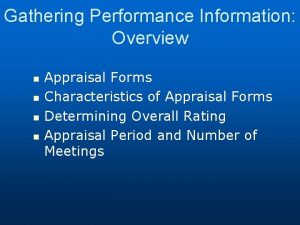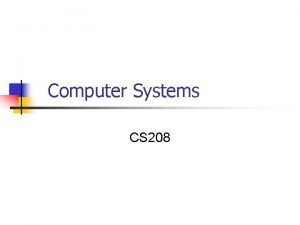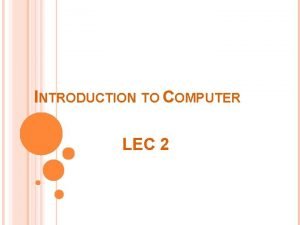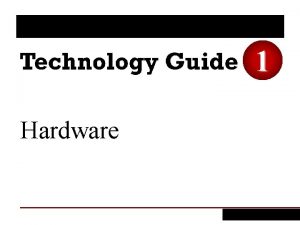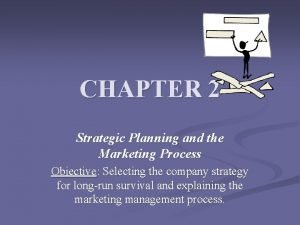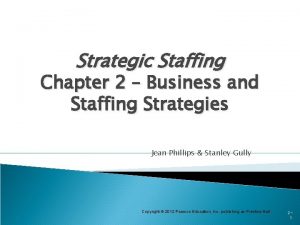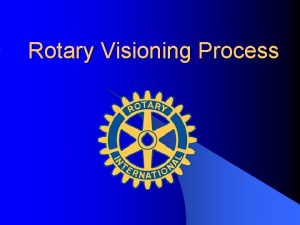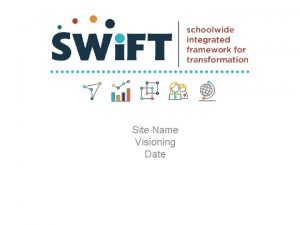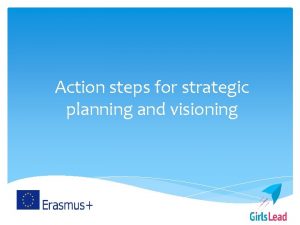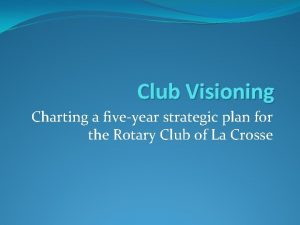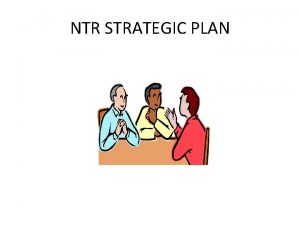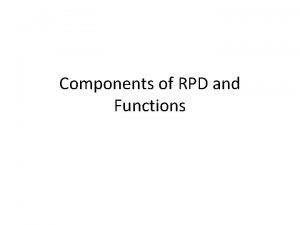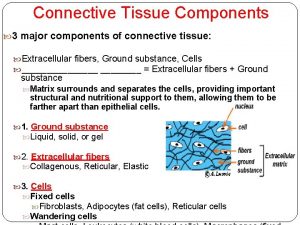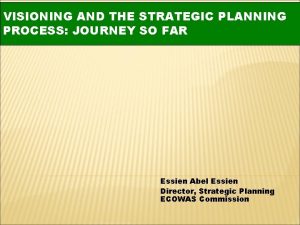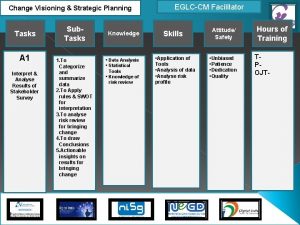Strategic Visioning Major Components of Strategic Plan 1



















- Slides: 19

Strategic Visioning

Major Components of Strategic Plan 1. Vision Statement 2. Mission Statement 3. Strategic Goals 4. Objectives 5. Metrics, Targets, Strategies and Actions : each objective or goal should have at least one specific, measurable target and at least one specific action, strategy or initiative to be taken or implemented in order to achieve the target or targets. Targets should be based on measurable indicators. 6. Acton Plan 7. Monitoring and Evaluation

Definition of Terms Vision – the desired or intended future state of a specific organization in terms of its fundamental objective and/or strategic direction. Vision is a long term objective. Ex. Vision : a world without homelessness. Mission – defines the fundamental purpose of an organization, basically describing why it exists and the means of attaining its vison. Mission is a short term objective. Ex. Mission : to provide assistance and job placement for the unemployed. Values – are core beliefs and strengths of an organization shared among all the constituents of the group. They drive the CULTURE of the group and the provide the framework used to make key decisions. An organization that names integrity and loyalty as key values will make decisions in a different way than an organization that names global citizenship and environmental sustainability.


Definition of Terms… Strategy – is a combination of its desired end goals (the vision) and the policies that it will enact to reach the goals. A well crafted vision-mission-goals statement can help its vision become a reality. But to be truly effective, they must be integrated into an organization’s CULTURE …they cannot remain standalone pieces of text.

Methodologies There are many approaches to STRATEGIC PLANNING but typically a threestep process may be used: 1. Situation – evaluate the current situation and how it came about. (refer to the output of DANGKAL). Different dioceses have their own situationer. 2. Target – define goals and/or objectives (Refer to Ka Lakbay) 3. Path – map a possible route to the goals/objectives. (roadmap)

Situational Analysis When developing strategies, analysis of the organization and its environment as it is at the moment and how it may develop in the future is important. Analysis using the SWOT method is very useful in looking at the internal and external factors of the organization. SWOT- Strenghts---Weaknesses---Opportunities---Threats Or sometimes known as SPOT- Strengths-Problems-Opportunities and Threats

Goals, Objectives and Targets Strategic planning and decision-making process should have a clear set of goals/objectives and a roadmap of ways to achieve these objectives; goals may be short- term; medium term or long term. Example : Goals of Youth Ministry ( from Ka lakbay) Goal 1 : to establish and strengthen the youth’s relationship with Christ. Target : develop a personal relationship with Christ. Strategy ( roadmap) create activities and programs to attain this goal/targeti. e. retreat; encounter with Christ etc.

Goal # 2 –provide opportunities for personal growth Youth ministry is a venue for self discovery and self development. It equips the young in different aspects of growth (personal and spiritual) to help them become mature, committed, conscientious and responsible citizens and Christians. Strategies and Roadmap to attain the goal

Goal #3 To encourage community involvement Most young people are involved only with their group and ignores the community, society and the church. Identify strategies and formulate a roadmap to attain this goal…activities nad programs/projects that are community –focused; participation in church activities/apostolates

Strategic Visioning Process –Workshop # 1 Where do we want to be ? In your small group discussion review the Vision – Mission- of the Youth Ministry as defined in Ka Lakbay. Re-state the vision-mission ( write these on the manila paper) ; be conscious of SMART ( specific, measurable, attainable, relevant, time-bound) 30 minutes

Workshop # 2 – Where are we now? Using the SWOT analysis method, describe the present situation of your DYM Use the DANGKAL as reference. Time – 30 minutes

Workshop # 3 How will we get to where we want to be ? Refer to the goals set in Ka Lakbay. Identify strategies to attain the goals. Be conscious of SMART. You may set your own goals and strategies as long as they are in line with the vision-mission of the youth ministry. Consider the needs of your diocese.

Workshop # 4 Action Planning A good plan is one that is a result of a process …. review and analysis of VMGO and is a result of brainstorming, consultation, FGD, etc. it is not the work of one person only…it is the work of a group composed of those who will implement the plan and those who will benefit from the plan. It is clientfocused and organization- focus. Plans have the following components: Objectives/goals Activities Time Frame Logistics Persons Responsible

Workshop # 5 What are we learning ? Monitoring and Evaluation – Strategic Visioning does not end with the plan. The most important component is Monitoring and Evaluation MONITOR- ADJUST – IMPROVE Revisit the plan; monitor the implementation of the plan Adjust structures and processes if necessary as a result of the monitoring Improve /upgrade/update Using your action plan as basis, prepare a simple M & E tool that you can use in your diocese or parish.

Action Plan Objective/s Activities Time Frame Logistics Persons Responsible

M & E Tool Activity Target Accomplishme Variance nt Remarks

SWOT STRENGTHS OPPORTUNITIES WEAKNESSES THREATS

 What is visual planning
What is visual planning Contoh visioning
Contoh visioning Components of english spelling system
Components of english spelling system Major components of an information system
Major components of an information system Information system hardware
Information system hardware Major hardware components
Major hardware components Three major components of computer system
Three major components of computer system Types of deflation
Types of deflation What are the core components of a computer system
What are the core components of a computer system Components of casework
Components of casework 4 major components of soil
4 major components of soil Major components of digital computer
Major components of digital computer Major hardware components of a computer system
Major hardware components of a computer system The major activity in strategic planning is
The major activity in strategic planning is 7 components of strategic staffing
7 components of strategic staffing Types of staffing strategies
Types of staffing strategies Strategic fit vs strategic intent
Strategic fit vs strategic intent Strategic complements and substitutes examples
Strategic complements and substitutes examples Resource based model
Resource based model Analysing the 6 strategic options megxit
Analysing the 6 strategic options megxit


